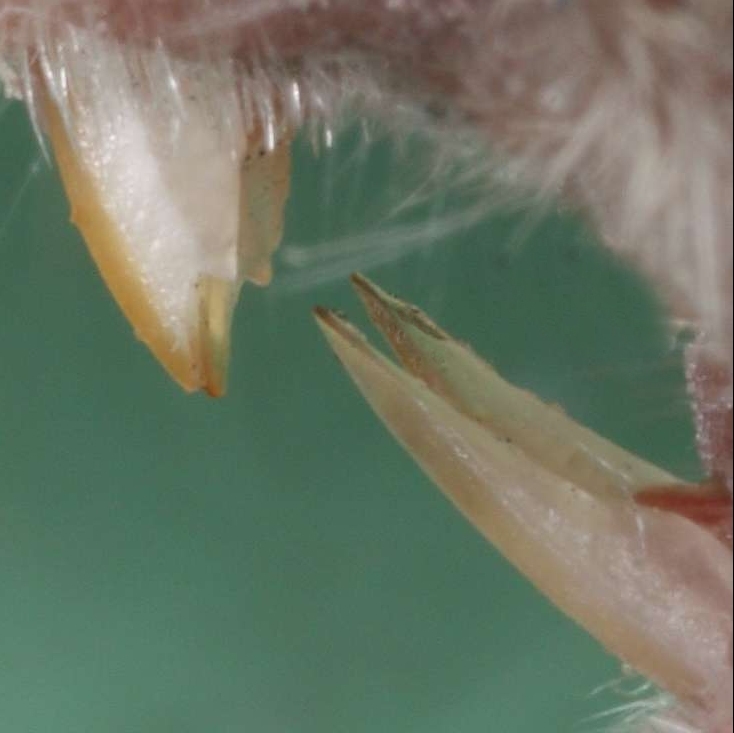|
Osaki
Osaki is a type of yokai told about in legends of Japan. They are also called osaki-gitsune. They can also alternatively be written 尾先. Other ways of writing them include 尾裂, 御先狐, 尾崎狐, among others. Concept They are in the folk beliefs of certain mountain villages of the Kantō region as well as other areas such as the Saitama Prefecture, the Okutama region of Tokyo Metropolis, the Gunma Prefecture, the Tochigi Prefecture, the Ibaraki Prefecture, the Nagano Prefecture, among other regions. There are no legends of this in Tokyo other than in Tama, and this said to be because osaki are unable to cross the Toda river (a part of Warabi-shuku) or because in Kantō Hasshū (eight Edo provinces of Kantō), there was the head of the foxes, the Ōji Inari Jinja, preventing the osaki from entering Edo. There is also a legend of an osaki that was originally a nine-tailed fox, Tamamo-no-mae, who perished at Nasu field (a field near Nasu), its golden fur flying off in ... [...More Info...] [...Related Items...] OR: [Wikipedia] [Google] [Baidu] |
Kitsunetsuki
, also written , literally means "the state of being possessed by a fox". The victim is usually said to be a young woman, whom the fox enters beneath her fingernails or through her breasts. In some cases, the victims' facial expressions are said to change in such a way that they resemble those of a fox. Though foxes in folklore can possess a person of their own will, is often attributed to the malign intents of hereditary Asian witchcraft#Japan, fox employers. Stories of fox possession (''kitsunetsuki'') can be found in all lands of Japan, as part of its folk religion. Stories of ''kitsunetsuki'' s have already been attested during the Heian period. From a clinical standpoint, those possessed by a fox are thought to suffer from a mental illness or similar condition. Such illness explanations were already being published by the 19th century, but the superstition was difficult to eradicate. (cf. ) Heian period The belief in ''kitsunetsuki'' dates back to the Heian Period. The ... [...More Info...] [...Related Items...] OR: [Wikipedia] [Google] [Baidu] |
Kōzuke Province
was a Provinces of Japan, province of Japan in the area of Japan that is today Gunma Prefecture. Kōzuke bordered Echigo Province, Echigo, Shinano Province, Shinano, Musashi Province, Musashi and Shimotsuke Province, Shimotsuke Provinces. Its abbreviated form name was . Under the ''Engishiki'' classification system, Kōzuke was ranked as one of the 13 "great countries" (大国) in terms of importance, and one of the 30 "far countries" (遠国) in terms of distance from the imperial capital, Kyoto. The provincial capital is located in what is now the city of Maebashi, Gunma, Maebashi; however, its exact location remains uncertain. The ichinomiya of the province is located in what is now the city of Tomioka, Gunma, Tomioka. History During the 4th century AD, (Kofun period) the area of modern Gunma and Tochigi prefectures were known as , literally "hairy field", but used as ateji for or "food field" in reference to an imperial agricultural area. At some unknown point in the 5th c ... [...More Info...] [...Related Items...] OR: [Wikipedia] [Google] [Baidu] |
Ueno, Gunma
is a List of villages in Japan, village located in Gunma Prefecture, Japan. , the village had an estimated population of 1,149 in 571 households, and a population density of 6.3 persons per km2. The total area of the village is . The village has the lowest population density of any municipality in Japan. Geography Ueno is located in the extreme mountainous southwestern portion of Gunma Prefecture, bordered by Saitama Prefecture to the south and Nagano Prefecture to the west. * Mountains ** Mount Suwa ** Mount Osutaka (1639m) ** Mount Takamagahara (1979m) * Rivers ** Kanna River Surrounding municipalities Gunma Prefecture * Kanna, Gunma, Kanna * Nanmoku, Gunma, Nanmoku Nagano Prefecture * Kawakami, Nagano, Kawakami * Kitaaiki, Nagano, Kitaaiki * Minamiaiki, Nagano, Minamiaiki * Sakuho, Nagano, Sakuho Saitama Prefecture * Chichibu, Saitama, Chichibu * Ogano, Saitama, Ogano Climate Ueno has a Humid continental climate (Köppen ''Dfb'') characterized by warm summers and cold winte ... [...More Info...] [...Related Items...] OR: [Wikipedia] [Google] [Baidu] |
Truth In Fantasy
Truth or verity is the property of being in accord with fact or reality.Merriam-Webster's Online Dictionarytruth, 2005 In everyday language, it is typically ascribed to things that aim to represent reality or otherwise correspond to it, such as beliefs, propositions, and declarative sentences. True statements are usually held to be the opposite of false statements. The concept of truth is discussed and debated in various contexts, including philosophy, art, theology, law, and science. Most human activities depend upon the concept, where its nature as a concept is assumed rather than being a subject of discussion, including journalism and everyday life. Some philosophers view the concept of truth as basic, and unable to be explained in any terms that are more easily understood than the concept of truth itself. Most commonly, truth is viewed as the correspondence of language or thought to a mind-independent world. This is called the correspondence theory of truth. Various theorie ... [...More Info...] [...Related Items...] OR: [Wikipedia] [Google] [Baidu] |
Shimonita, Gunma
is a List of towns in Japan, town located in Gunma Prefecture, Japan. , the town had an estimated population of 7,058 in 3,292 households, and a population density of 37 persons per km2. The total area of the town is . Shimonita is famous for its konjac and Welsh onion. Geography Shimonita is located in southwestern Gunma Prefecture bordering on Nagano Prefecture to the west. Part of the town is within the borders of the Myōgi-Arafune-Saku Kōgen Quasi-National Park. Approximately 84% of the town's total area is covered by forests. * Mountains: Mount Arafune (1423 m), Mount Inafukumi, Mount Ōgeta, Ozawadake, Kanatake, Mount Nikkura, Mount Yotsumata, Mount Monogatari, Mount Midō, Mount Myogi, Mount Monomi * Rivers: Kabura River Surrounding municipalities Gunma Prefecture *Annaka, Gunma, Annaka * Fujioka, Gunma, Fujioka * Kanna, Gunma, Kanna * Kanra, Gunma, Kanra *Nanmoku, Gunma, Nanmoku * Tomioka, Gunma, Tomioka Nagano Prefecture * Karuizawa, Nagano, Karuizawa * Saku, N ... [...More Info...] [...Related Items...] OR: [Wikipedia] [Google] [Baidu] |
House Mouse
The house mouse (''Mus musculus'') is a small mammal of the rodent family Muridae, characteristically having a pointed snout, large rounded ears, and a long and almost hairless tail. It is one of the most abundant species of the genus '' Mus''. Although a wild animal, the house mouse has benefited significantly from associating with human habitation to the point that truly wild populations are significantly less common than the synanthropic populations near human activity. The house mouse has been domesticated as the pet or fancy mouse, and as the laboratory mouse, which is one of the most important model organisms in biology and medicine. The complete mouse reference genome was sequenced in 2002. Characteristics House mice have an adult body length (nose to base of tail) of and a tail length of . The weight is typically . In the wild they vary in color from grey and light brown to black (individual hairs are actually agouti coloured), but domesticated fancy mice and l ... [...More Info...] [...Related Items...] OR: [Wikipedia] [Google] [Baidu] |
Ural Owl
The Ural owl (''Strix uralensis'') is a large nocturnal owl. It is a member of the true owl family, ''Strigidae''. The Ural owl is a member of the genus ''Strix (genus), Strix'', that is also the origin of the family's name under Linnaean taxonomy.Sclater, P. L. (1879). ''Remarks on the Nomenclature of the British Owls, and on the Arrangement of the Order Striges''. Ibis, 21(3), 346-352. Both its common name and scientific name refer to the Ural Mountains of Russia where the Type (biology), type specimen was collected. However, this species has an extremely broad distribution that extends as far west as much of Scandinavia, montane eastern Europe, and, sporadically, central Europe, thence sweeping across the Palearctic broadly through Russia to as far east as Sakhalin and throughout Japan.Voous, K.H. (1988). ''Owls of the Northern Hemisphere''. The MIT Press, . The Ural owl may include up to 15 subspecies, but most likely the number may be slightly fewer if accounting for Cline (bi ... [...More Info...] [...Related Items...] OR: [Wikipedia] [Google] [Baidu] |
Kanra District, Gunma
is a Districts of Japan, rural district in Gunma Prefecture, Japan. As of January 2015, the district had an estimated population of 22,972 and an area of 365.82 km2, with a population density of 62.8 people per square kilometer. Towns and villages *Kanra, Gunma, Kanra *Nanmoku, Gunma, Nanmoku *Shimonita, Gunma, Shimonita The southern part of the city of Takasaki, Gunma, Takasaki and all of the city of Tomioka, Gunma, Tomioka were formerly part of the district. History The area of Kanra District was formerly part of Kōzuke Province and appears in Nara period records, such as the 711 AD ''Shoku Nihongi'' as . Its etymology indicates that it was an area settled by large numbers of people from the Korean peninsula. Per a census conducted at the end of the Edo period, the area was divided into three towns and 79 villages administered as ''tenryō'' directly by the Tokugawa shogunate, 21 villages under the control of Nanokaichi Domain and 32 villages under the control of Obata ... [...More Info...] [...Related Items...] OR: [Wikipedia] [Google] [Baidu] |
Nanmoku, Gunma
250px, Semi Valley ravine is a village located in Gunma Prefecture, Japan. , the village had an estimated population of 1,746 in 971 households, and a population density of 15 persons per km². The total area of the village is . Nanmoku, like many rural areas in Japan, has witnessed significant population decline since the mid-20th century. As of 2023, 67.5% of the population was over age 65 and the median age was 68.4, making Nanmoku the grayest village in Japan. Geography Nanmoku is located in southwestern Gunma Prefecture bordering on Nagano Prefecture to the west. Part of the village is within the borders of the Myōgi-Arafune-Saku Kōgen Quasi-National Park. * Mountains: ** Mount Arafune (1423 m) ** Mount Hikage (1407 m) ** Mount Ōya (1081 m) ** Eboshidake (1182 m) ** Mount Kurotaki (870 m) ** Mount Yotsumata (900 m) ** Tateiwa (1265 m) * Rivers: ** Kumakura River ** Nanmoku River ** Ōnita River ** Ōshiozawa River Surrounding municipal ... [...More Info...] [...Related Items...] OR: [Wikipedia] [Google] [Baidu] |





